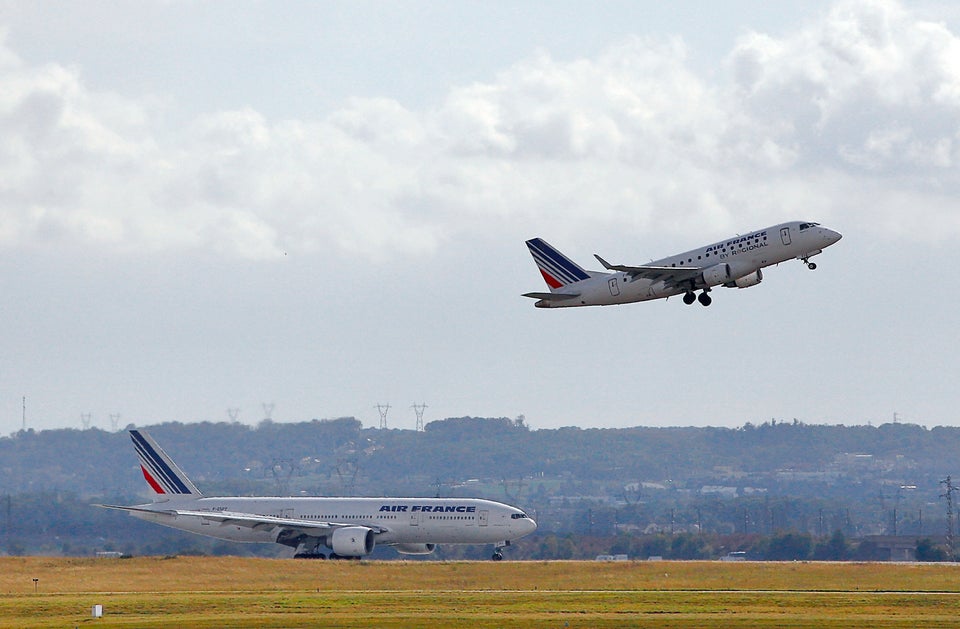Heat waves offer no dramatic images of flying debris or surging seawater. Yet each year torrid temperatures take more lives in the U.S. than tornadoes, hurricanes, floods and lightning combined.
The silent killer also discriminates, as low-income communities of color often start with poorer underlying health than other communities, and have fewer tools and resources to combat a heat that can be further intensified by their immediate environment.
"It's a deadly mix," said George Luber, director of the U.S. Centers for Disease Control and Prevention Climate and Health Program. "Those most vulnerable are those that incur the most exposure. And these exposures are going to increase in magnitude, and in frequency, with climate change."
The annual death toll from extreme heat is already on the rise, according to a report released by the CDC on Thursday, with the number of heat-related deaths predicted to jump from the current annual rate of around 700 to between 3,000 and 5,000 by 2050.
During a two-week heat wave that roasted four states last summer, the CDC report noted the loss of 32 lives to heat-related illnesses. Twenty of the documented victims died in homes without air conditioning.
A lack of air conditioning -- or an inability to afford turning on a unit due to high energy costs -- is just one of the many factors that leave the poor relatively ill-equipped to combat heat. Impoverished communities may also face less access to air-conditioned malls, cooling stations or swimming pools. And their bodies may be less prepared for the added toll of hot weather due to the cumulative burden of air pollution and social stressors, such as crime and poverty, as well as the health problems to which such exposures may have contributed, such as asthma, diabetes and heart disease.
"Exposure to extreme heat doesn't just manifest as heat stroke," said Luber, noting that high temperatures can aggravate underlying conditions and possibly result in someone dying of an asthma or heart attack.
Jalonne White-Newsome, a policy analyst for the nonprofit We Act for Environmental Justice, highlighted Harlem as a case in point. Busy roads, diesel bus depots and sewage treatment plants surround oil-burning public housing complexes in which a relatively large number of children suffer from respiratory problems.
"Pollution makes heat stress even worse," said White-Newsome, whose research focuses on heat waves and climate justice.
At the same time, heat and humidity can react with compounds in the air to create an ever more toxic cocktail of ozone and other unhealthy pollutants.
The heavy use of air conditioning can be a double-edged sword, as it pumps heat out onto the streets and stresses the grid, added White-Newsome, and that potentially forces more, often dirtier power plants to come online and emit yet more greenhouse gases and toxic pollution.
Coal-fired power plants, as The Huffington Post has reported, are disproportionately located in environmental justice communities.
"I would tell people to definitely turn their A/C on, if that is their only option to stay cool and alive," White-Newsome added. "At no point should anyone be dying from heat -- rich or poor, black or white."
Meanwhile, poor communities frequently reside in buildings that the CDC's Luber compares to "ovens," such as a "four-story brick building with blacktop roof" surrounded by heat-trapping concrete and few green spaces.
"Areas that are poor get much hotter," said Luber, noting how small islands of extreme heat can persist day and night during a heat wave.
In fact, he added, neighborhoods within the same urban area can differ by more than 10 degrees Fahrenheit when temperatures soar. A 2009 study in Arizona found that for every $10,000 an area's income rises, the average outside temperature drops by one-half a degree Fahrenheit.
Strips of grass and canopies of trees can go a long way toward cooling the air, explained Patrick Kinney, director of the climate and health program at the Columbia University Mailman School of Public Health.
"It's not just about the shade," said Kinney, who led a study, published in May, that found heat-related deaths in Manhattan may rise about 20 percent over the next decade as a result of climate change. "Walk into a forest and it's always cooler than outside of the forest. That's because trees are evaporating moisture, as if they're sweating. It cools them down and cools down the surrounding area."
Bill Jesdale, an environmental policy expert at the University of California, Berkeley, led a separate study, also published in May, that underscored the racial disparities. His research team found African Americans were about 50 percent more likely than their white counterparts to live in heat-prone communities, while Hispanics and Asians were at least a third more likely.
Jesdale pointed to one interesting observation: Each racial group was more likely to live in a heat-prone neighborhood if they also lived in a highly segregated city.
"That suggests the effect of segregation is not just about giving whites great neighborhoods and denying other people good heat characteristics," he speculated. "There's something about living in a highly racially stratified setting that makes people less invested in the common good. Trees are one reflection of the common good."
Many U.S. cities are taking steps to alleviate these disparities in heat-inflicted misery and illness. Los Angeles, for example, is targeting a massive tree-planting campaign at low-income neighborhoods, while New York City is amping up its white- and green-roof programs, and is giving away air conditioning units to people in need.
"It's way cheaper to give someone a $400 air conditioner than spend $7,000 for a trip to the ER," said Luber.
Of the 32 documented heat-related deaths during last summer's heat wave, he added, "Every single one was preventable."

